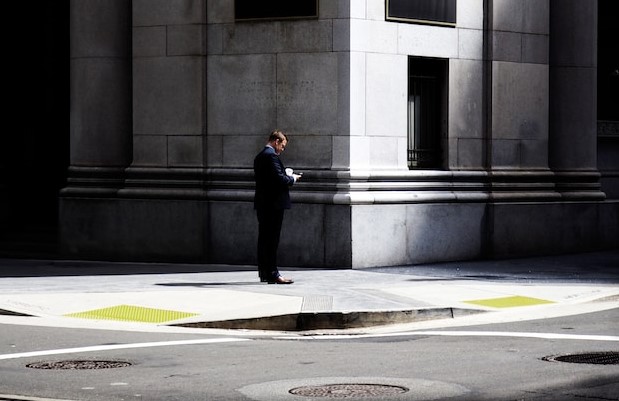Proletariat represents the working class, whereas bourgeoisie denotes the capitalist ruling class. The main difference between them lies in their ownership of production means, with proletarians owning nothing but their labor while capitalists own factories or other productive assets.
What is proletariat?
(Photo by Ives Ives on Unsplash )

Proletariat refers to the working-class individuals who do not own any means of production and have to sell their labor in order to make a living. They are typically involved in manual or low-skilled labor jobs such as manufacturing, construction, agriculture, etc. Proletarians are often paid wages that barely cover their basic needs, leaving little room for savings or investments.
Historically, the term proletariat referred specifically to urban industrial workers during the Industrial Revolution. However, it has since evolved to encompass all working-class people who lack ownership of capital and control over their work.
The concept of proletariat is important because it highlights the exploitation and subjugation of lower classes by those in power. The capitalist class (the bourgeoisie) relies on proletarian labor to generate profits while paying them less than they deserve. This dynamic creates an imbalance between those who hold economic power and those who do not.
Understanding what constitutes a proletariat is essential for analyzing social structures and identifying ways in which we can strive towards greater equality among all members of society.
What is bourgeoisie?
(Photo by Marcus Lenk on Unsplash )

The bourgeoisie is a social class that emerged during the Industrial Revolution in Europe. They are defined as the middle or upper-middle class who own and control the means of production, such as factories, businesses, and land.
The term “bourgeoisie” comes from the French word for “townspeople,” which reflects their urban origins. They were typically merchants, traders, bankers, and other business owners who profited from industry and commerce.
In contrast to the proletariat (working-class), who sell their labor power to survive, the bourgeoisie own capital and employ others to work for them. This gives them significant economic power and influence over society.
The rise of capitalism in modern times has led to an increasing concentration of wealth among the bourgeoisie at the expense of workers’ wages. Marx argued that this exploitation is inherent in capitalist systems and ultimately leads to class conflict between these two groups.
Today’s global economy continues to be influenced by bourgeois values like individualism, competition, and consumerism. The lifestyle associated with being part of this group often includes luxurious material possessions such as fine cars or fashionable clothing brands.
Proletariat Vs. Bourgeoisie – Key differences
Proletariat and bourgeoisie are the two major classes in a capitalist society. The key difference between them is their relationship to production and ownership of property.
Proletariat refers to the working class who do not own means of production, but instead sell their labor power for wages. They have no control over what they produce or how it is produced, as these decisions are made by the capitalists.
On the other hand, bourgeoisie refers to the capital-owning class who own means of production such as factories, land, and machinery. They use these assets to generate profits through exploitation of workers’ labor power.
Another significant distinction between proletariat and bourgeoisie is their economic status. Proletarians typically live off meager wages and struggle to make ends meet while bourgeoisies enjoy a higher standard of living due to their wealth.
In terms of political power, bourgeoisie holds dominant positions in government institutions as well as cultural and educational institutions while proletarians remain largely disenfranchised from these domains.
Examples of proletarian societies
Proletarian societies are those where the working class holds power and control over society. These societies are characterized by a lack of private property ownership, with the means of production being owned collectively by all members of society. One famous example of a proletarian society is the Paris Commune which was established in 1871 after workers rose up against their rulers.
The Soviet Union is also an example of a proletarian society that existed during the 20th century. It arose out of the Russian Revolution, which saw ordinary workers banding together to overthrow their oppressors and establish a new socialist state. The Soviet Union’s economy was based on collective ownership, with everyone sharing in its wealth and resources.
Another notable example is China under Mao Zedong during his Cultural Revolution from 1966-1976. During this time, Mao aimed to eliminate bourgeois culture and create a truly communist society based on collectivism, egalitarianism, and self-reliance.
Cuba under Fidel Castro can also be considered as one such society where socialism has been implemented since revolution i.e., nationalizing industries including healthcare & education along with free access for people without any discrimination or cost.
There have been many examples throughout history where proletarians have come together to challenge existing social structures and build more equitable systems based on shared ownership and control over resources.
Examples of bourgeoisie societies
There have been many societies throughout history that can be classified as examples of bourgeoisie societies. One such society is the United States, which has a strong capitalist economy and a high standard of living for its citizens.
Another example is Europe during the Industrial Revolution, where the rise of manufacturing led to the emergence of a new middle class who owned factories and businesses. The bourgeoisie in these societies were seen as the driving force behind industrialization and economic growth.
In contemporary times, countries like China and India are also viewed as having significant bourgeois elements due to their rapid economic development and increasing wealth inequality. This has led to debates about whether these countries are truly socialist or if they have become more capitalist-oriented over time.
Some argue that even communist countries like Cuba and North Korea have developed their own forms of bourgeoisie through state-controlled industries and government elites who hold power over resources.
There are many examples of bourgeoisie societies across different historical periods and geographic regions. These complex social dynamics continue to shape our world today.
How does Marx define the difference between proletariat and bourgeoisie?
Marx defines the difference between proletariat and bourgeoisie in his theory of class struggle. According to Marx, the bourgeoisie are the owners of means of production, while the proletariat are those who sell their labor to survive. The bourgeoisie accumulate wealth by exploiting the labor power of workers and paying them less than what they contribute.
The relationship between these two classes is not one of harmony but rather a constant struggle. Marx believed that this struggle would eventually lead to a revolution where the proletariat would overthrow the bourgeoisie and establish a socialist society.
Furthermore, he argued that under capitalism, workers were alienated from themselves, others and their work because they had no control over it. They were forced to work long hours for low pay without any say in how things were done.
Marx’s theory has been criticized for being too simplistic as it does not take into account other factors such as race, gender or ethnicity which can also play important roles in shaping class relations. However, his ideas remain influential in social and political thought today among scholars who advocate for greater economic equality and democracy.
Are the bourgeoisie capitalists?
The bourgeoisie is often associated with capitalists, but are they one and the same? While there is some overlap between these two groups, they are not interchangeable.
The bourgeoisie refers to the class of people who own or control the means of production. This could include business owners, landlords, and other wealthy individuals who profit from their ownership or management of resources. They may employ workers but do not necessarily participate directly in labor themselves.
On the other hand, capitalism refers to an economic system where goods and services are produced for profit in a market-driven economy. Capitalism can be practiced by anyone regardless of social class.
While many members of the bourgeoisie may benefit from capitalist systems, not all capitalists belong to this group. Similarly, some members of the working class may also participate in capitalist ventures such as entrepreneurship.
In short, while there is certainly overlap between these two concepts, it’s important to keep in mind that they refer to different aspects of economic organization and social hierarchy.
What is the bourgeoisie theory?
The bourgeoisie theory is a central concept in Marxist philosophy that describes the class of people who own the means of production and control society’s wealth. According to Marx, the bourgeoisie emerged during the industrial revolution when capitalism became widespread, and they derived their power from owning factories, businesses, land and other resources.
The bourgeoisie are characterized by their ability to accumulate wealth through exploitation of workers by paying them low wages while retaining most of the profit generated by their labor. This results in an unequal distribution of resources where the rich become richer at the expense of ordinary workers.
Marx argued that this system was inherently unstable because it created conflicts between capitalists and workers. The proletariat eventually realized that they were being exploited and began demanding better working conditions, higher wages, and more rights.
In response to these protests, capitalists often used force to maintain control over their property which led to violent clashes such as strikes or demonstrations against the ruling classes. These struggles ultimately resulted in significant social changes like unionization movements or even revolutions aimed at overthrowing existing systems.
Marxism views capitalist economies as exploitative systems with inherent contradictions leading inevitably towards revolution.
Featured Image By – Nathan Cima on Unsplash









